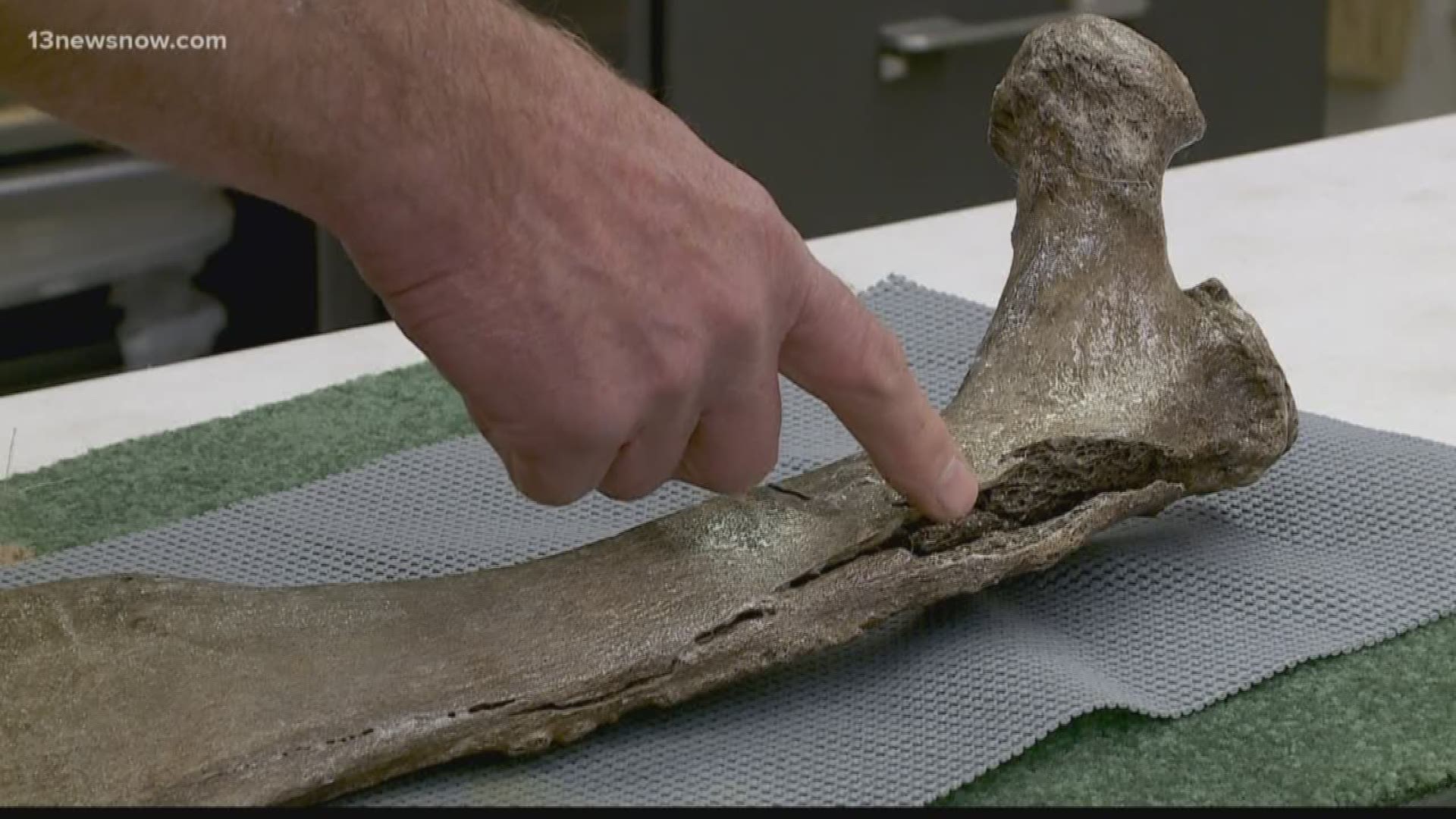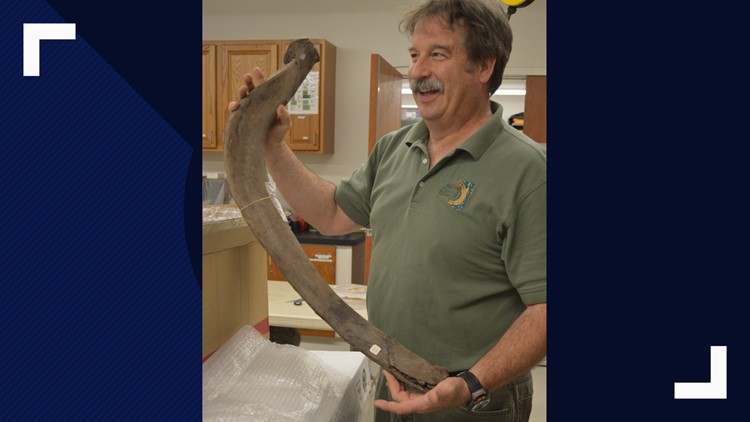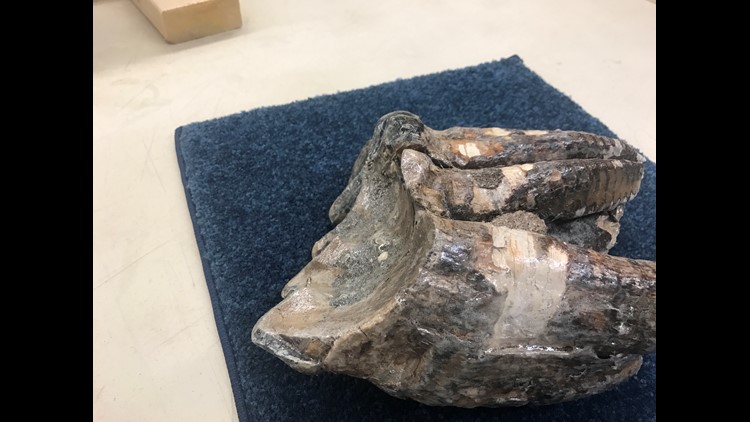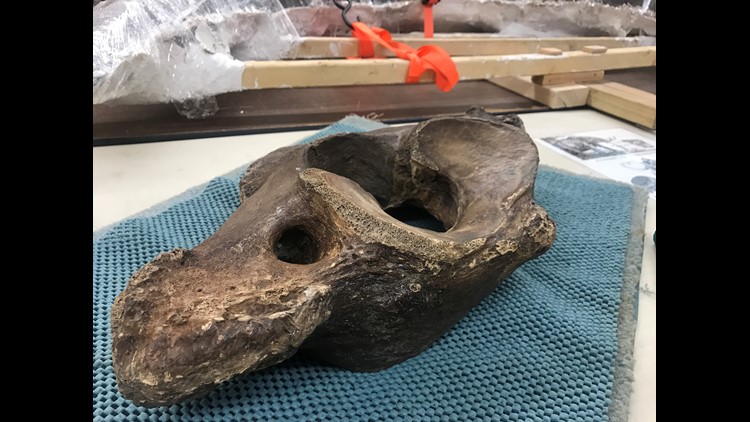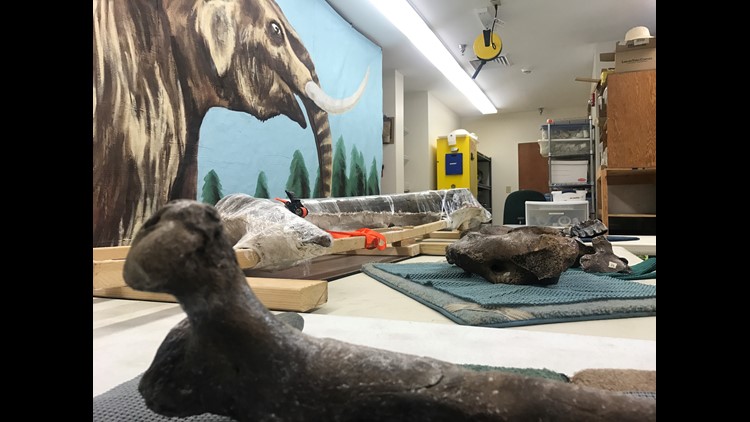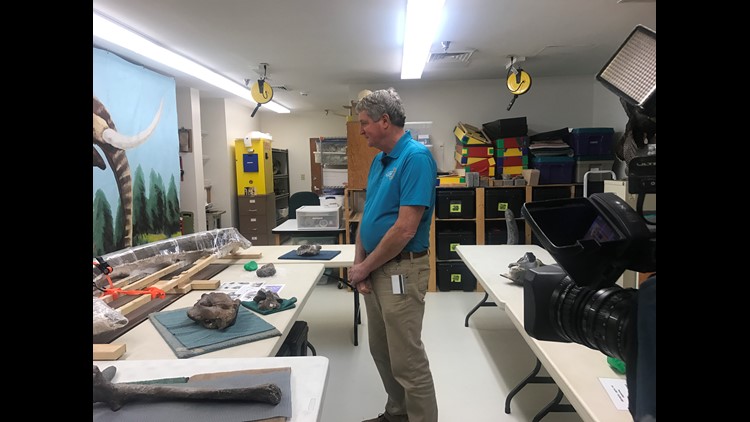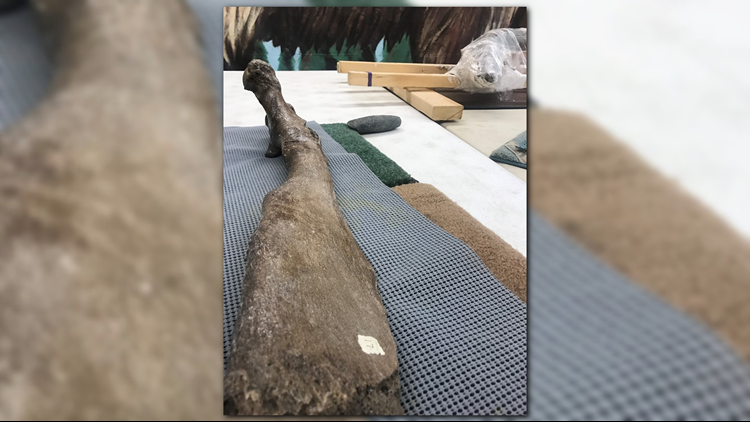NEWPORT NEWS, Va. — It was an unusual find.
Two-hundred mastodon bones -- dating back 15,000 years to the Ice Age -- were excavated from a wooded area in Yorktown.
It's the second mastodon to be discovered in Virginia and the first discovered east of the Blue Ridge Mountains. The man who discovered fossil gifted them to the Virginia Living Museum, where they’ll go on display.
Mastodons are elephant-like mammals that went extinct about 12,000 years ago.
Fred Farris, the Director of Exhibits at VLM, said it’s a rare discovery.
“We have one of the most endangered artifacts ever found in Virginia,” he said.
“It was during the ice ages. [Virginia] didn't look like it does now, there were spruce trees like a Christmas center here. It was cold. This animal was quite common here.”
A Virginia man discovered the artifacts by accident.
“It was 1983 and a bricklayer wandering through the woods in York County saw something sticking out of the stream. [He] picked it up, [and] immediately knew it was a tooth of a mastodon,” said Farris.
But the landowner at the time didn't allow the bricklayer to excavate the bones, so he waited 35 years for a new owner to move in and let him dig them out of the water.
“It was just a freak chance that it died in this perfect location for its bones to be preserved,” said Farris.
Now, the VLM is going through a tedious process in order carefully preserve the bones. They’re so fragile, it could take years before they're ready to go on exhibit.
Farris said the process is exciting.
“It brings back the past. This is telling us a story,” said Farris.
A worn out tooth is evidence the mastodon struggled to eat. Farris said a large dent found in its chewing area and jaw signal tooth decay, and may have led to its death.
“It was probably in pain and the jaw had a huge hole, so it had a big infection in the jaw,” said Farris.
Still, decades after its discovery, the mastodon's story will live on.
“We’ve gotta take care of it and ensure that future generations can see it,” said Farris.
PHOTOS: Mastodon bones at the Virginia Living Museum
To that end, the Virginia Living Museum's mastodon bone collection was recently named as one of Virginia's "Top 10 Endangered Artifacts" by the Virginia Association of Museums.
The public can vote for their favorite artifact on the Top 10 list, with the top two winners being awarded conservation grants from the museum association.
The purpose of the list is to bring the past to life and showcase the need for conservation.
The collection at VLM comprises 20 to 25 percent of a full mastodon and includes a complete tusk, a near-complete foot, a partial jaw, a humerus bone, several ribs, several teeth, and other bones.
The fossils are preserved well enough to share this Mastodon's story even though the full animal is not intact.
"The VLM mastodon fossils deserve to be selected as one of the 'Top 10 Endangered Artifacts' because of both its rarity and its fragile nature," Farris explained in a statement.
He added, "In addition to being such a rare find, it is very fragile and in need of conditioning. Having spent thousands of years in acidic water underground, now that it is exposed to air it will begin to dry out and crumble. Even though it is being stored in a secure, climate-controlled environment, these rare fossils need to be treated with hardening agents to protect them."
Also included on the Top 10 Endangered Artifacts list are:
- Amherst County Historical Society (Amherst County, VA)
- Fairfield Foundation (Gloucester, VA)
- Friendship Firehouse Museum (Alexandria, VA)
- James Monroe Museum (Fredericksburg, VA)
- Mosby Area Heritage Association (Fauquier County, VA)
- Museum of the Shenandoah Valley (Winchester, VA)
- Red Hill-Patrick Henry Memorial Foundation (Campbell County, VA)
- Southwest Virginia Museum Historical State Park (Big Stone Gap, VA)
- Town of Wytheville Museums/Wythe County Historical Society (Wythe County, VA)
The public is invited to vote for their favorite endangered artifact in an online voting competition from January 22 through January 31.
The two artifacts that receive the most votes will be awarded $4,000 and $3,000 respectively to conserve their artifacts and care for their continued preservation.
The Community Foundation for a Greater Richmond and the Blandford Rees Foundation made funding for the grants possible.

